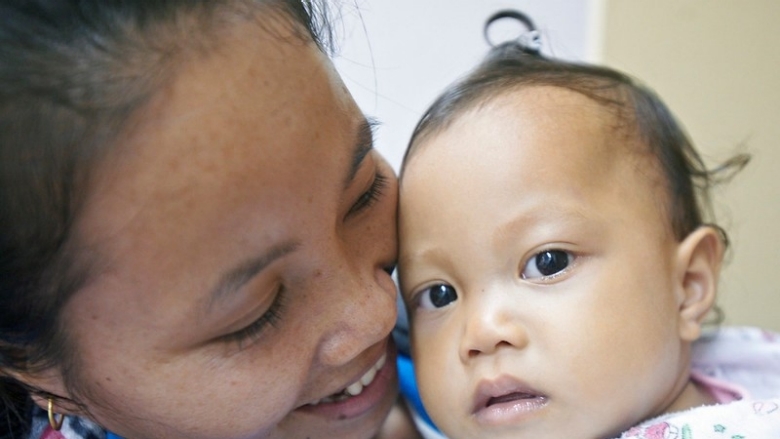Highlights
- Countries in East Asia and the Pacific have committed to providing universal health coverage for their populations – so they can access quality health care when they need it without falling into financial hardship.
- To achieve better health outcomes, the World Bank is supporting countries by implementing projects that incorporate results-based financing based on indicators that incentivize the achievement of agreed health service goals.
- DLIs are increasing access to vaccines, improving nutrition, extending services to remote villages, and combating non-communicable diseases in Cambodia, Lao PDR, Indonesia, Samoa, and Papua New Guinea.
The World Bank is supporting countries across East Asia and the Pacific in their efforts to improve health services so that their citizens can get the health care they need without falling into financial hardship. Results-based financing based on Disbursement linked indicators (DLIs) are proving a valuable tool, helping maintain momentum towards universal health coverage (UHC) in the region.
Essentially, these indicators incentivize achieving agreed milestones by paying out funding only after tangible and verifiable results have been obtained. It’s not a tool for every project or environment, but careful and considered implementation has delivered significant results in Lao PDR, Cambodia, Indonesia, Samoa and Papua New Guinea.
Support for the initiatives discussed below is provided through the World Bank executed Advance UHC Multi-Donor Trust Fund, which includes significant contributions from the Australian Government’s Aid Program in collaboration with GAVI, Global Fund, and the Bill and Melinda Gates Foundation.
Lao PDR
Disbursement linked indicators (DLIs) effectively addressed the problem of inequity in Lao PDR’s immunization efforts by boosting vaccination rates in 50 lagging districts in 2019. A US$4 million grant from the Australian Government was pivotal in lifting immunization rates in the targeted districts by an average of 22% percent for measles-containing vaccine, and 30% for Pentavalent-3 vaccine (diphtheria, tetanus, pertussis, hepatitis B and Haemophilus influenzae type b) over the 2016–17 baseline.
Two DLIs have also helped drive increases in the number of children receiving integrated health outreach in remote villages. In 2019, almost 90,000 children regularly had their growth monitored and received counselling and more than 1,000 villages are now receiving regular integrated outreach. Subsequently, these indicators have been adopted as part of the Lao PDR’s national health information reporting platform. DLIs and their verification process have considerably improved overall data quality over the years.
Cambodia
DLIs are promoting integrated nutrition and immunization as part of the Cambodia Nutrition Project (CNP). The focus here is improving coordination between resources and systems and linking support for central level or special programs with that of frontline providers.
DLIs are also encouraging cross-agency collaboration. Targets align the timeframes and processes of community-based activities under one ministry with those under local governments governed by another ministry. For instance, three DLIs implemented by the Ministry of Interior (MOI) aim to build capacity at the subnational level, including performance assessment of local government administration. This is linked with a DLI for the National Center for Health Promotion at the Ministry of Health, to ensure community health workers in the same area are properly trained, supervised, and equipped at the same time that this support is provided to local governments.

